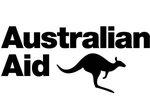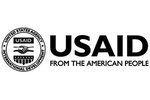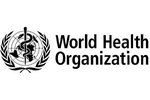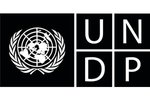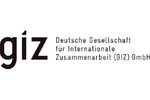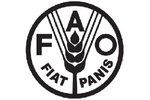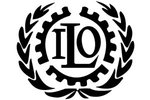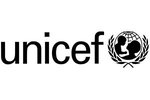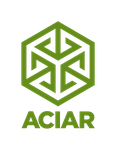Collaboration: the greatest tool to fight a global pandemic
Amidst a rapid pivot to address the impact of COVID-19, strong partnerships have been the most vital tool in our toolbox.
Many approaches to managing the risks of COVID-19 have focused on three things: information, resources and outreach. But here’s one thing that can make these initiatives go further: collaboration.
COVID-19 has uprooted many things. It has changed the way people work, the way we socialise, and how we access information. At Catalpa, nearly all of our work interactions now occur over Slack or Google Meet. And like many other international development organisations, we’ve had to rapidly pivot our focus and programs to address the immediate impacts of the pandemic.
We’ve always worked closely with partners and focused on outcomes for people, and so we’ve always put collaboration at the core of what we do. But that’s taken on a new meaning in these times. In our response to COVID-10, our human-centered design approach and the digital tools in our toolbox have been essential. But even more critical has been our strong partnerships.
Here's how they've made a difference in our work.
Sharing information that people can trust and access
A lot of initiatives designed to respond to COVID-19 have focused on access to information. Having reliable, trustworthy and timely information can save lives. However, one main challenge we observed is that with so much information, how do you establish trust and credibility quickly. In Timor-Leste, we did this by partnering with the Ministry of Health and strengthening their official communication channels using World Health Organisation endorsed public health messages.
Through these partnerships, we created an official WhatsApp chatbot in Tetun language, helped set up the national COVID-19 information hotline, and coordinated a national digital information campaign. Within three days of launch, our WhatsApp chatbot had responded to over 50,000 questions providing WHO information on prevention, treatment and risks, and the Ministry’s local health updates. The national public health messaging campaign is also directly reaching over 700,000 people each day. These messages focus on how to protect yourself from COVID-19, through topics such as handwashing, avoiding gathering in large groups, myth busters, mental health, and positive relationships and parenting.
Together with our partner Health Alliance International, we also pivoted our Liga Inan maternal and child health program to deliver targeted messages to new mothers and soon-to-be moms on the importance of child spacing and accessing health services during a pandemic. These messages reach nearly 60–70% of all pregnant women in Timor-Leste.
The most important part of these projects is how they make existing information more effective, which has also been a goal of the Hamutuk program. The program aims to consolidate collective action, and its technology component includes shared data collection and a mobile app feature that partners could use to share nutrition information with families.
The program was originally designed to improve collaboration between partners working in nutrition. But given the times, there was a huge opportunity to support the Ministry of Health’s COVID-19 mitigation efforts. It’s now helping map COVID-19 responses and we’ve included the government’s COVID-19 information in the app, including videos and information cards that partners can share with communities.
Clear information can mean a lot for COVID-19 mitigation, and streamlining it is an important part of making it more effective.
Strengthening health provider readiness and knowledge
While in-person training can be really effective, sometimes, it’s not possible or safe. For health professionals, though, it has been vital to make sure people are aware of how to manage COVID-19 safely and effectively.
As part of the Haroman program, we repurposed our Bero digital learning platform (which we’ve used for the Matenek education technology program) in partnership with Maluk Timor and the National Health Institute (supported by the Australian Government). The program aims to rapidly train health professionals across the country. The accompanying app aggregates training content, tracks progress, and offers nudges to motivate people to learn.
Many organisations, including the UN, NGOs and more, have contributed training content for the platform, making it comprehensive and relevant. The training now includes infection prevention, disease control, violence against women, and triage protocols. More than 500 health providers are using it already.
Person-to-person knowledge sharing is essential for a coordinated response to the pandemic. But it can be difficult to do during a pandemic for initiatives that normally involve training large groups together. That’s why it’s important to remember that while one organisation has the expertise, another may have the tools. And when timeliness can mean the difference between life and death, collaboration is crucial.
Managing economic impacts
Mohinga is an open data platform to track aid spending in Myanmar. During the COVID-19 pandemic, organisations have been reporting their activities to support the response effort. We’re also tracking more and more projects via the Myanmar Project Bank portal to help identify major investments made by the Myanmar Government, donors and the private sector, and to better understand their social, environmental, and economic impact.
Open data is a useful way that knowledge can be shared. It not only helps people find information, but can also aggregate large-scale information and make things viewable at a glance. Development partners have shown this in Myanmar, leveraging the Mohinga Aid Information Management System to report and coordinate their COVID-19 activities. This makes it easier for institutions such as the Myanmar Government and United Nations bodies to monitor what’s going on, find any gaps, and understand where funding is going during a crisis.
This is an effort that only works with the contribution of other organisations. And it’s a clear indicator that when we pool our insights, we can gain a better picture of what’s going on.
Supporting frontline health workers
While we started testing various prints on our printers a few years back, we never anticipated how useful they could be during a public health crisis.
Frontline workers are critical to COVID-19 response. We’ve been putting our 3D printer to work to help protect them, printing PPE face shields for use during their work days.
This project has been a huge collaborative effort, and that’s the way we’ve really been able to make an impact. This includes pooling our resources, including people’s time and 3D printers at the organisations we’ve teamed up with, which has helped us print hundreds of shields together since March. Similie, UNDP Timor-Leste, Knua Juventude Fila-Liman (a youth entrepreneurship hub), Dili International School and we at Catalpa have all contributed, with the Partnership for Human Development (funded by the Australian Government) providing the filament.
These face shields have been distributed to providers of healthcare and essential services, including sexual and reproductive health and psychological support. It’s important to recognise that in the face of a public health crisis, these needs don’t stop. In fact, they become even more important as people manage trauma and, as evidence has shown is highly likely, an increase in domestic violence.
Collaboration made our effort what it is. Without it, we wouldn’t have been able to print nearly as many shields, and we may have had to restrict our shields to specific types of healthcare workers. Working together has helped us protect more people, which keeps us all safer.
We think collaboration is vital to the success of a public response, but we also recognise the need to take time for ourselves. We hope anyone who’s reading this is safe and well.
We’re sending some warm wishes to everyone who’s been affected, and a big thank you to all essential workers who have been keeping us moving forward.
. . . . . .
Want to know more about what we do? Visit our website at www.catalpa.io, and be sure to follow us on Twitter, Facebook and LinkedIn for updates.
And if you have any thoughts on our work, we’re keen to read your comments 👇🏽
